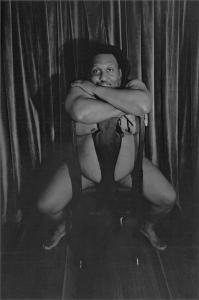Debbie says
On Monday, November 16, at 7:00 p.m., Laurie and I will be the featured speakers at a body oppression teach-in sponsored by Occupy Sonoma County. If you are anywhere near Santa Rosa, California, please join us at the Peace and Justice Center of Sonoma County, 467 Sebastopol Avenue. (Donation requested.)
Here’s an (unpublished) article I wrote to offer some context for the teach-in:
Perhaps the only thing that all human beings have in common is that each and every one of us lives in a body. Until the bioengineers figure out a way to upload our brains into the cloud, that’s going to stay true.
So what is “body oppression”?
If you are treated less well than other people because of something about your body, that’s body oppression. If a store detective follows you around because your skin is darker, and/or you are younger, that’s body oppression. If you can’t get into a building because your wheelchair doesn’t climb stairs, that’s body oppression. If your doctor makes assumptions about your health based on your size, that’s body oppression. And if you learn to shame yourself because of the body you live in, that’s internalized body oppression.
In other words, body oppression is everywhere. Almost all of us know what it feels like to be oppressed because of our bodies, and most of us know what it feels like to internalize that oppression and blame ourselves.
Resistance to body oppression is both individual and collective, both private and organized; however it forms, it always relies on each of us learning to accept our own bodies, live in our own skin. The cosmetics manufacturers and the beauty corporations have co-opted this message into “Love Your Body,” but Laurie and I are working towards something much richer, more complex, and more powerful than a smooth skin campaign.
Working with Laurie’s stunning black-and-white photographic images of bodies – fat female bodies, male bodies, bodies of women who live in Japan – and with accompanying text which encourages the viewer not to trivialize those images. We don’t want the portraits of fat women to be simplified to “yes, those bodies were beautiful in another time,” so we provide text that demonstrates her as powerful in the tradition of fat liberation.
Resisting body oppression as an individual isn’t (necessarily) about loving your body; that’s great if it happens. It’s about the right to look in the mirror and see what you see, not what the world tells you to see. It’s about making the invisible visible.
Michelle, who blogs as The Fat Nutritionist, said it perfectly:
We need to be allowed to see ourselves as human, at any size, and to see ourselves represented alongside other humans. We need to be able to share our images in public, if we want, and push the recognition of our humanity. Mostly, we need to be allowed to have images of ourselves imbedded in our brains, alongside everyone else. When we see nothing but images of people who don’t look like us celebrated and represented by our own culture, little by little, it degrades our sense of being human. It is a form of systemic emotional abuse.
Resisting body oppression collectively is about working together, about learning to notice who is being oppressed and who is oppressing, about fighting back, about demanding that every single one of us is treated respectfully and fairly. Over the last few decades, body image activists working together have changed the kinds of clothes that are available, the quality of medical information, the laws about seat belt extenders on airplanes, and much more. There’s so much more to change that sometimes we forget how far we’ve come.
Building collective resistance can only be done by adding more and more individuals to the group. The one thing that makes the invisible visible better than a photograph is a living, breathing person. Each victim of body oppression (fat, dark-skinned, disabled, or any or all of the above) who asserts their right to live fully is a harbinger of the world we all want to live in. Each ally who supports us is a bulwark of the effort.
Come talk with us at the teach-in. Uploading into the cloud isn’t happening any time soon; as long as we all have bodies, let’s learn to live in them well and to fight for what we deserve.



